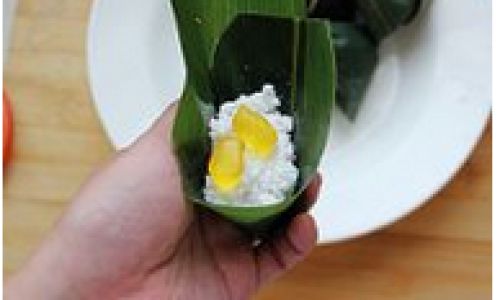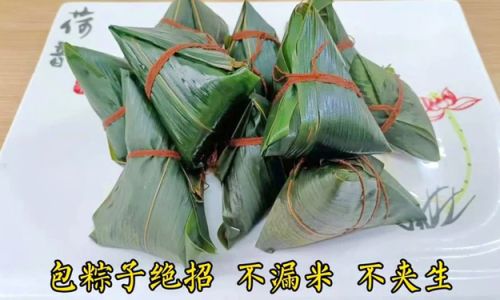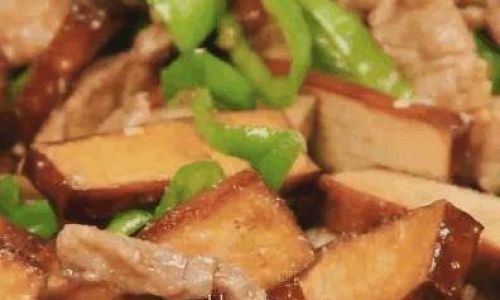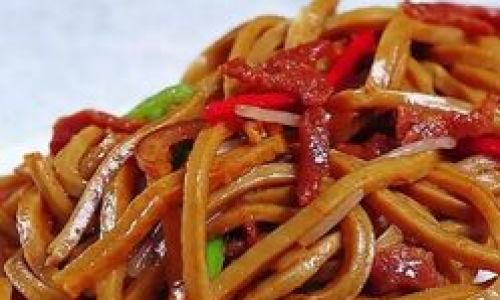Table of content
Fried rice cakes, known in Chinese cuisine as Chao Zongzi, are a beloved dish that marries simplicity with complexity. Originating from street food stalls and home kitchens across Asia, this dish transforms humble ingredients—sticky rice, proteins, and vegetables—into a symphony of textures and flavors. The challenge lies in achieving the ideal balance: a crispy, golden exterior encasing a soft, chewy center, all while harmonizing savory, umami-rich notes. This guide will demystify the process, offering step-by-step instructions, expert tips, and creative variations to elevate your Chao Zongzi game.

The Essence of Chao Zongzi
Chao Zongzi is more than a meal—it’s a canvas for culinary creativity. At its core, the dish features zongzi (rice cakes) stir-fried with meat, vegetables, and aromatics. Unlike its steamed or boiled counterparts, fried rice cakes rely on high-heat cooking to develop a coveted crunch while preserving the rice’s inherent stickiness. This duality of texture, combined with the interplay of salty, sweet, and spicy flavors, makes Chao Zongzi a crowd-pleaser.
Ingredients: Building Blocks of Flavor
To craft exceptional fried rice cakes, start with quality ingredients. The beauty of this dish lies in its adaptability, allowing cooks to tailor components to taste or dietary needs.
Rice Cakes (Zongzi)
- Fresh vs. Frozen vs. Dried:
- Fresh rice cakes (available in Asian markets) offer the softest texture but require immediate use.
- Frozen rice cakes are convenient; thaw them thoroughly before cooking to prevent sogginess.
- Dried rice cakes need soaking (4–6 hours) until pliable but firm.
- Shape Matters: Opt for cylindrical or rectangular cakes for even frying. Avoid overly thin slices, which may disintegrate.
Proteins
- Pork: Thinly sliced belly or shoulder, marinated in soy sauce, rice wine, and cornstarch.
- Shrimp: Peeled and deveined, tossed with sesame oil for aroma.
- Tofu: Firm or pressed, cubed for a vegetarian option.
- Eggs: Lightly beaten and scrambled for added richness.
Vegetables
- Cabbage: Napa or green cabbage, shredded for sweetness.
- Carrots: Julienned for color and crunch.
- Mushrooms: Shiitake or button, sliced for umami depth.
- Aromatics: Garlic, ginger, and scallions form the flavor base.
Sauces and Seasonings
- Soy Sauce: Light soy for saltiness; dark soy for color.
- Oyster Sauce: Adds sweet-savory depth.
- Chili Paste or Sauce: Adjust to taste for heat.
- Sugar: A pinch balances saltiness.
- White Pepper: For subtle warmth.
Oils
- Neutral Oil: Vegetable or canola for frying.
- Sesame Oil: A drizzle at the end enhances aroma.
Preparation: The Foundation of Perfection
Proper prep ensures even cooking and flavor integration.
-
Rice Cake Prep:
- Soak dried cakes in cold water until pliable. Drain and pat dry.
- If using frozen, thaw in the refrigerator overnight.
-
Protein Marination:
Marinate meat for 15–30 minutes in a mix of soy sauce, rice wine, cornstarch, and a pinch of sugar.
-
Vegetable Prep:
Shred cabbage, julienne carrots, and slice mushrooms. Keep aromatics separate.
-
Sauce Mix:

Combine soy sauces, oyster sauce, chili paste, sugar, and white pepper in a bowl. This streamlines cooking.
Cooking Techniques: Achieving Crispy Perfection
The key to great Chao Zongzi is mastering heat control and ingredient sequencing.
Preheat the Wok or Skillet
- Use a carbon-steel wok or large skillet. Heat over high flame until smoking.
- Add 2–3 tbsp oil, swirling to coat. A well-seasoned pan prevents sticking.
Stir-Fry Aromatics
- Add minced garlic and ginger. Stir-fry for 10 seconds until fragrant.
- Toss in scallion whites; reserve greens for garnish.
Cook Proteins
- Add marinated meat or shrimp. Spread evenly; let sear for 30 seconds before stirring.
- For tofu, pan-fry until golden on each side.
Vegetable Addition
- Toss in carrots and mushrooms first (they need longer cooking).
- Add cabbage last to retain crispness.
Introduce the Rice Cakes
- Add rice cakes to the pan. Press gently against the surface to encourage browning.
- Avoid overcrowding: Cook in batches if necessary.
Sauce Integration
- Pour the pre-mixed sauce over the ingredients. Toss rapidly to coat.
- Add a splash of water (1–2 tbsp) if the pan seems dry, but avoid excess liquid.
Final Flourish
- Drizzle sesame oil and toss in scallion greens.
- For extra crispiness, let the rice cakes sit undisturbed for 20–30 seconds between stirs.
Tips for Success
-
Rice Cake Consistency:
Overcooked cakes become gummy; undercooked ones are hard. Test a piece before serving.
-
Heat Management:
High heat develops crispiness, but lower it if the pan smokes excessively.
-
Flavor Balance:
Taste and adjust seasoning before serving. Add a splash of vinegar for brightness.
-
Wok vs. Skillet:

A wok’s sloped sides aid tossing, but a heavy skillet works if stirred vigorously.
-
Garnish Creatively:
Top with toasted sesame seeds, crushed peanuts, or fresh cilantro.
Regional Variations and Creative Twists
Chao Zongzi is infinitely adaptable. Experiment with these ideas:
- Sichuan-Style: Add doubanjiang (spicy bean paste) and Sichuan peppercorns.
- Korean-Inspired: Incorporate gochujang and kimchi.
- Seafood Medley: Mix shrimp, squid, and clams with a splash of fish sauce.
- Vegetarian Delight: Use mushrooms, edamame, and a dash of miso.
Serving Suggestions
- Dipping Sauces: Pair with a soy-vinegar dip or spicy chili crisp.
- Sides: Serve alongside pickled daikon, steamed buns, or a light cucumber salad.
- Beverages: Balance richness with jasmine tea, lagers, or sparkling water.
Common Mistakes to Avoid
- Soggy Cakes: Ensure thorough thawing/draining and avoid overcrowding the pan.
- Uneven Cooking: Cut vegetables and proteins to uniform sizes.
- Bland Flavor: Marinate proteins and adjust seasoning aggressively.
- Burnt Aromatics: Cook garlic and ginger briefly to avoid bitterness.
Conclusion: The Joy of Chao Zongzi
Chao Zongzi is more than a recipe—it’s a celebration of texture and taste. Whether enjoyed as a quick weeknight dinner or a festive dish, mastering this dish rewards patience and practice. Experiment with fillings, adjust spice levels, and share your creations with loved ones. After all, the best meals are those made with care and shared with joy.
By understanding the interplay of heat, ingredients, and technique, you’ll soon craft Chao Zongzi that rivals any street vendor’s. So grab your wok, fire up the stove, and let the sizzle begin!






0 comments